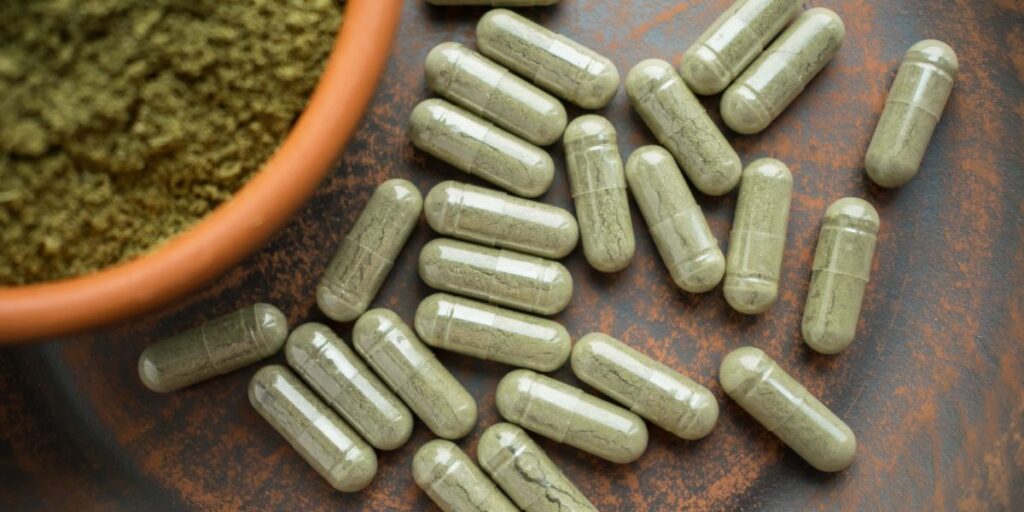Kratom (Mitragyna speciosa korth) is an Asian tree related to those used for producing coffee, and its leaves have long been used as stimulants by residents living nearby. Brewing these leaves into tea provides workers with more energy to work longer hours while others use its leaves medicinally. With a half-life of 24 hours and elimination taking five to six days (though urine drug testing may detect its presence for up to seven days). Kratom can still be detected for use for several days after being introduced into one’s system. Its presence can even be detected up to seven days post-consumption, though most common practice does not involve testing.
Kratom Use

The Drug Enforcement Administration (DEA) does not classify kratom as a controlled substance, yet has recognized it as being of concern. As reported by them, when consumed at low doses the leaves contain stimulating properties. At higher dosage levels, however, they appear to mimic opiate drugs by providing pain relief or analgesia effects.
DEA estimates of the use of kratom in the US are difficult to assess. However, it appears to have an impressive following among users and several groups are actively advocating its medicinal benefits in managing pain management as well as heroin withdrawal symptoms.
Kratom Effects
Kratom and Other Mitragynines: The Chemistry and Pharmacology of Opioids state that mitragynine is the primary active component in kratom. It provides stimulating effects similar to caffeine or methylphenidate (the active ingredient found in Ritalin). Higher dosages produce euphoria, sedation, and analgesia (pain relief) effects as well as analgesic properties (pain relieving properties). Unfortunately, it may cause unwanted side effects such as sweating, overheating, reduced appetite, frequent urination diarrhea nausea, or weight loss.
Most research studies that investigate the long-term effects of drugs rely on case studies and reports on one instance of long-term use – as their basis. While case studies are not considered as reliable evidence as those that involve groups of individuals to look at the overall impacts of the drug, case studies have provided some indications of physical dependence (with withdrawal symptoms when you stop using), as well as long-term issues that include mood swings, aggression, hallucinations, and seizures.
How Long Will Kratom Last in Your System?
One factor complicating the detection of kratom use in someone’s system is that the drug is often overlooked during drug panels, even for high-priority jobs such as security clearances. As mitragynine or its metabolites (compounds produced as part of its breakdown) may not appear, as kratom isn’t considered an extremely popular or significant substance of abuse.
Though most drug screenings will likely fail to directly detect mitragynine use, specialized detection tests such as the 10-panel drug test for kratom and its metabolites could potentially detect mitragynine for up to seven days after ingestion of urine samples containing this drug.
At this writing, saliva tests, blood tests, and hair follicle tests do not appear to be common practice for detecting substances found in kratom. Therefore, most often when being tested for the presence of drugs kratom will likely not be detectable.
What Are The Determining Factors For How Long Kratom Remains in Your System?

Individuals taking the 10-panel screen may encounter various variables that affect how long kratom remains detectable in their systems.
- Body weight can have a major influence on how long drugs remain in someone’s system. Mitragynine, being fat soluble, remains longer in those with higher body fat levels than it would for those with less.
- As drug effects appear to be dose-dependent, how much of any particular medication a person takes could dictate its length of effect in their system.
- Age also plays a factor. Elderly individuals tend to metabolize drugs more slowly than their younger counterparts.
- Combining medications can alter their rate of elimination from the body. This is particularly evident if one combines drugs with alcohol as the liver gives priority to processing it first (at approximately one ounce per hour), then other substances (including drugs).
- Other factors, including individual health, metabolism, and specific medical conditions can impact how long drugs remain in a person’s system. For example, someone suffering from liver cirrhosis will metabolize substances more slowly.


